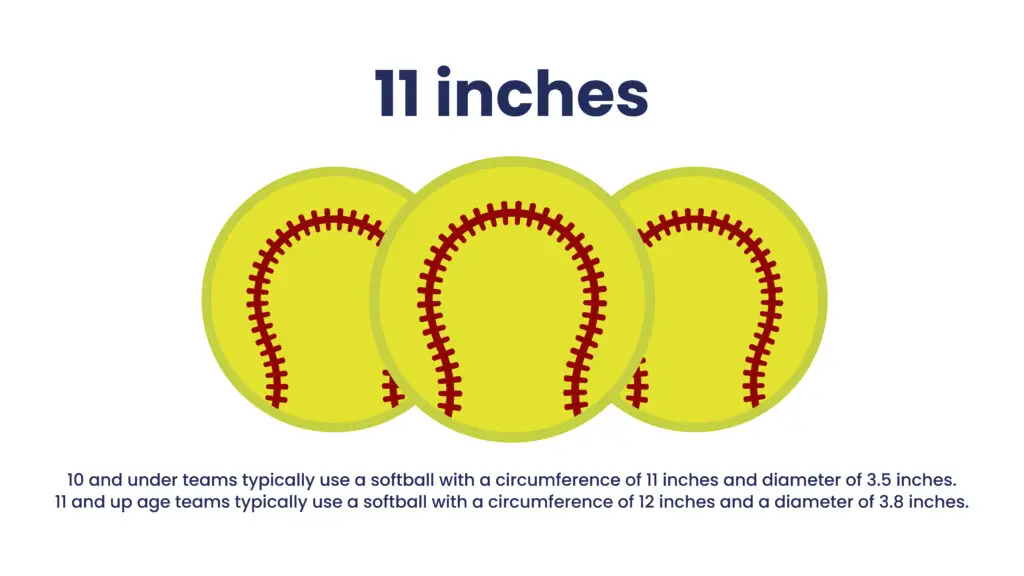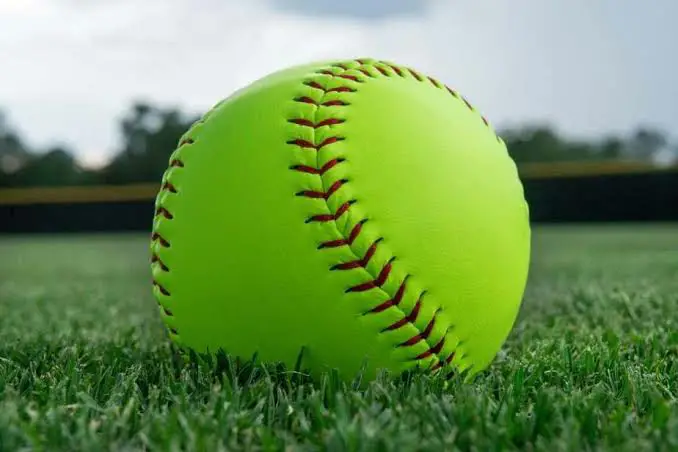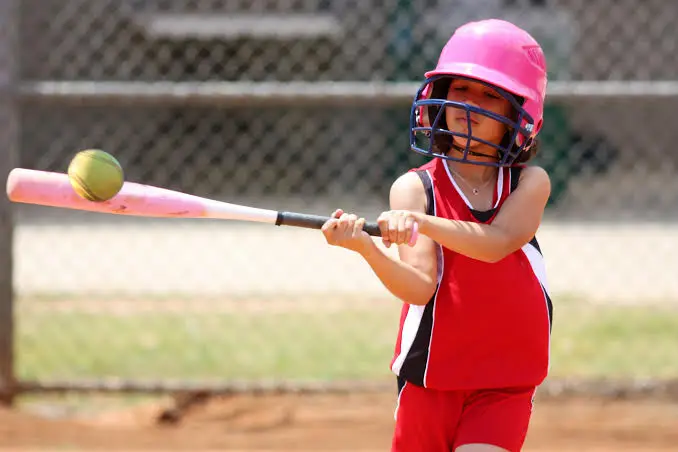It can be challenging to determine what size softball is for a 10u player. Knowing what size is best for your budding slugger can be challenging, given the wide variety of options available. Discover which softball size is ideal for your young player by reading this in-depth guide to various sizes available.

Softball can be played in two distinct styles: fastpitch and slowpitch. Regarding higher-level competition, such as in college or professional leagues, fastpitch softball reigns supreme. With its larger, softer ball, slowpitch softball is typically seen as more leisure activity. In general, the level of competition is lower than in fastpitch softball.
What size softball you’ll need depends on the rules of the game you’re playing. The ball used in fastpitch softball games is smaller and harder than the ball used in slowpitch games. The fastpitch and slowpitch softballs are usually white with red, while the slowpitch softball is typically tan or yellow with black stitching. You should ask your coach or league officials what kind of softball you’ll play.
What Kind of Softball Sizes Are There to Choose From?

Softballs typically come in three lengths, the most common being 11 inches, 12 inches, and 14 inches. The 11-inch ball is the smallest size available and is most commonly used by players 11 years or younger. The ball with a circumference of 12 inch ball is the standard size and is utilized at all levels of play, ranging from youth leagues through college and professional competitions. The ball with a diameter of 14 inches is the largest available and is normally only used by players competing at a professional or semi-professional level.
What Size softball for 10u?

A few considerations exist when determining the appropriate softball size for your young player. Your child will need a ball 11 inches in diameter if they want to play fastpitch softball. This is the typical size for a fastpitch softball, and it is used at all levels of play, from youth leagues through college and professional competitions. Your child will need a ball that is 12 inches in diameter if they want to play slowpitch softball. This is the usual size for a slowpitch softball field, and most recreational leagues use it.
Your child’s age is another consideration that should go into selecting the appropriate softball size for them. If she is younger than 12 years old, she will require a youth softball to play the game. When compared to regulation softballs, youth softballs are typically smaller and softer. These characteristics make youth softballs easier for younger players to hit and throw. If your child is 12 years old, they will be allowed to utilize a regulation ball.
Remember that your child’s skill level should be considered while selecting the appropriate softball size for her to use. If she is just getting started, a youth softball league is probably the best choice for them. On the other hand, if she has been playing for some time and has improved her skills, she may be ready for a regulation ball. In the end, the decision of what size ball is appropriate for your child should be made in conjunction with her coach.
10u Softball Rules
The fact that players in 10-and-under, also known as 10U, softball leagues are still developing their pitching skills means that the regulations governing pitchers in these games reflect this. According to the rules of the American Softball Association, or ASA, 10U pitchers are permitted to toss the softball from a closer distance and utilize a ball with a smaller diameter so that it is easier to hold. Sure 10U recreational leagues cap the number of innings a player can pitch or require them to utilize a pitching machine for at least half of the game.
Distance to Home Plate
The American Softball Association (ASA) stipulates that pitchers in fastpitch softball leagues for children aged ten and under, known as 10U, must launch the ball from a distance of 35 feet. According to the regulations set forth by the ASA, the distance that separates the pitcher’s rubber and home plate in slowpitch leagues are 40 feet.
Legal Form
Pitchers in the 10U age group must start with their hands split and both feet planted on the pitching rubber. At the beginning of the pitching motion, the pitcher must bring her hands together and hold that position for one to ten seconds. Before beginning the windmill motion, she would start by draping one arm out to the side. Pitchers must prevent an illegal crow hop or leap by dragging the back foot along the ground while throwing the ball.
Pitcher Substitutions
According to the regulations of the ASA, a pitcher who has left the position but has not yet moved out of the batting order is permitted to return to the pitch at any point during the game. However, the number of innings that a pitcher is allowed to play the position in 10U recreational softball leagues is governed by various criteria. In order to prevent young, inexperienced pitchers from issuing excessive walks, some local recreational leagues use a combination of pitching machines, coach pitch, and player pitch in 10U leagues.
What Size Does A Softball Have To Be To Hit A Tee Shot?
This question does not have a definitive answer because the size of the softball will not have any bearing on your ability to hit a tee shot. Nevertheless, selecting a size that allows you to hold and swing the bat comfortably is essential. If you are a younger player, you must select a size that allows you to grip the club and swing it comfortably.
If you are a more seasoned player who is also older, you must pick a size that presents a challenge to you and helps you develop your existing skills. You need to think about the kind of competition, be it a league or a tournament, that you will be participating in. Check the regulations of the league or event you want to participate in to see if there are any size restrictions before making your selection.
